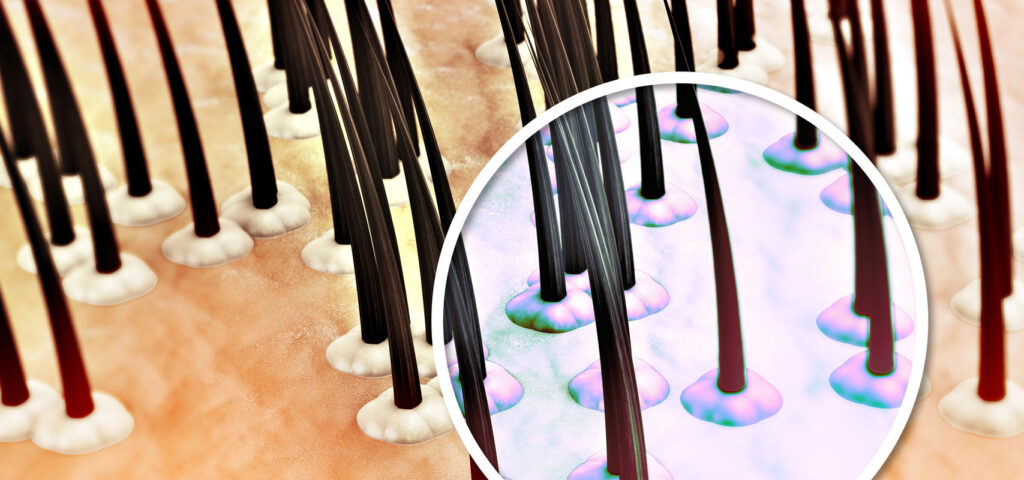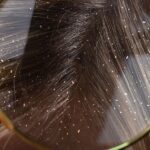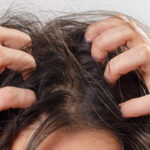Oily dandruff, also known as seborrheic dermatitis, is one of the most troublesome scalp conditions affecting many people. While it may appear on different parts of the body, it most often affects the scalp, causing not only physical but also psychological discomfort. Below we explain what oily dandruff looks like, its causes, and the treatment methods that can help eliminate it.
Oily dandruff – symptoms to look out for
Oily dandruff is characterized by the presence of yellow, greasy scales that stick to the scalp. Unlike dry dandruff, which appears as white flakes, oily dandruff has a distinctive greasy look and is harder to remove from the hair. The skin underneath is often red and irritated, accompanied by itching and burning. In this condition, the sebaceous glands produce excess sebum, giving the scalp a greasy appearance. Hair may look oily and require frequent washing.

One of the most troublesome symptoms is itching, which may be intense and interfere with daily life. In some cases, oily dandruff leads to hair loss, as excess sebum, scalp inflammation, and yeast activity weaken the hair and trigger shedding.
Read more: How does dry dandruff differ from oily dandruff?
Oily dandruff – causes
The main cause is excess sebum production by sebaceous glands. While sebum normally moisturizes the scalp and hair, overproduction creates greasy scales and irritation. The scalp is also home to Malassezia yeasts. In excessive numbers, they cause inflammation and irritation, contributing to oily dandruff.
Read more: Dandruff – causes, types, treatments, and home remedies
Other factors include genetic predisposition, hormonal changes (puberty, pregnancy, menopause), and stress, which disrupts sebaceous gland function. A diet rich in fats and sugars also worsens the condition.
Treatment options
Effective treatment is possible. Specialized anti-dandruff shampoos with selenium sulfide or salicylic acid regulate sebum production, fight yeast, and reduce inflammation.
In severe cases, antifungal medications (topical or oral, e.g., ketoconazole) may be required. Dermatologists may also recommend soothing topical treatments for inflammation and itching. A balanced diet with vegetables, fruits, healthy fats, and protein supports therapy.
Home remedies
For milder cases, home methods can help:
– Tea tree oil: antifungal and anti-inflammatory. Add a few drops to shampoo or massage into the scalp with carrier oil.
– Apple cider vinegar: restores scalp pH. Dilute 1:1 with water, apply for 15 minutes, then rinse.
– Lemon juice: antibacterial and antifungal. Massage into the scalp for 10 minutes before rinsing (avoid irritated skin).
Oily dandruff in children
In children, it may result from overactive sebaceous glands, fungal infections, or genetics. Treatment should be gentle: mild children’s shampoos with soothing ingredients, natural oils, or aloe vera masks. If symptoms persist, a dermatologist will tailor treatment to the child’s needs.
Oily dandruff and hair loss
Although oily dandruff itself does not directly cause hair loss, it creates conditions that weaken hair. Excess sebum and scales clog follicles, while chronic inflammation damages them, leading to shedding.
Prevention includes proper shampoos, gentle scalp cleansing, a balanced diet, and dermatologist visits for persistent issues.
At OT.CO Clinic, our dermatologists and trichologists specialize in diagnosing and treating oily dandruff. Contact us to receive professional help and tailored treatment.







